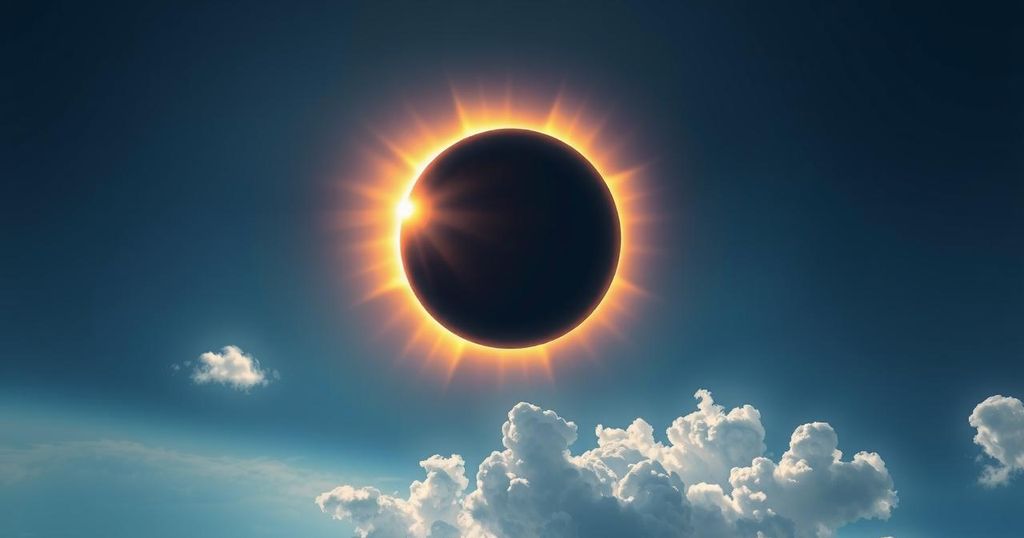Understanding the March 29, 2025 Solar Eclipse: Visibility and Safety Precautions

The March 29, 2025 solar eclipse will not be visible in India, as the Moon’s shadow will miss the country. This partial solar eclipse will be largely observable in regions of Eastern and Northern Canada, with specific times for viewing elsewhere. Proper eye protection is essential during the event to prevent eye injuries.
The solar eclipse occurring on March 29, 2025, will not be visible in India, as the Moon’s shadow will not traverse the country. This event, described as a partial solar eclipse, will cause only a portion of the Sun to be obscured, resembling a segment missing from the Sun’s disc. Observers are advised to wear proper eye protection, such as eclipse glasses or solar viewers, to safeguard against eye damage during this phenomenon, as standard sunglasses are insufficient for protection.
Regions with the best visibility for the eclipse will include Eastern and Northern Canada, where up to 93.1% of the Sun may be obscured. The northeastern United States can expect over 85% coverage. Other areas such as parts of Africa, Siberia, the Caribbean, and Europe will experience a lesser extent of the eclipse, with approximately 66% obscuration in Reykjavik, Iceland. The eclipse will commence at dawn in North and South America and will occur between afternoon and evening in eastern Europe and northern Asia.
The timings for the solar eclipse on March 29, 2025, are as follows: it will commence at 4:50 AM EDT, peak at 6:47 AM EDT, and conclude by 8:43 AM EDT. In India, the phenomenon begins at 2:20 PM IST and reaches its maximum at 4:17 PM IST; however, due to the alignment and the Moon’s shadow, it will not be observable.
When attempting to view the solar eclipse, one should observe the following precautions: utilize appropriate eye protection, refraining from using regular sunglasses, which do not provide adequate safety. Additionally, avoid viewing the Sun through optical devices such as telescopes or cameras, as this could lead to severe eye injuries. To view the eclipse indirectly, one may employ a pinhole projector or observe the ground beneath leaf canopies, where natural pinhole projections may occur.
A partial solar eclipse occurs when the Moon obscures only a fraction of the Sun’s disc, as it lies between Earth and the Sun, but does not achieve perfect alignment. Consequently, this phenomenon gives the impression that the Sun has a portion missing for observers situated in the respective shadowed regions.
In summary, the solar eclipse on March 29, 2025, will offer limited visibility and will not be visible in India. Observers in various parts of North America and Europe will experience varying degrees of obscuration. Hence, it is crucial to employ proper protective measures while attempting to view this celestial event safely. Understanding the nature of partial solar eclipses enhances the appreciation of such astronomical occurrences.
Original Source: www.hindustantimes.com






